Many people grow sage (salvia) as an herb for culinary use. But did you know that sage plants also make wonderful ornamental additions to your perennial garden?
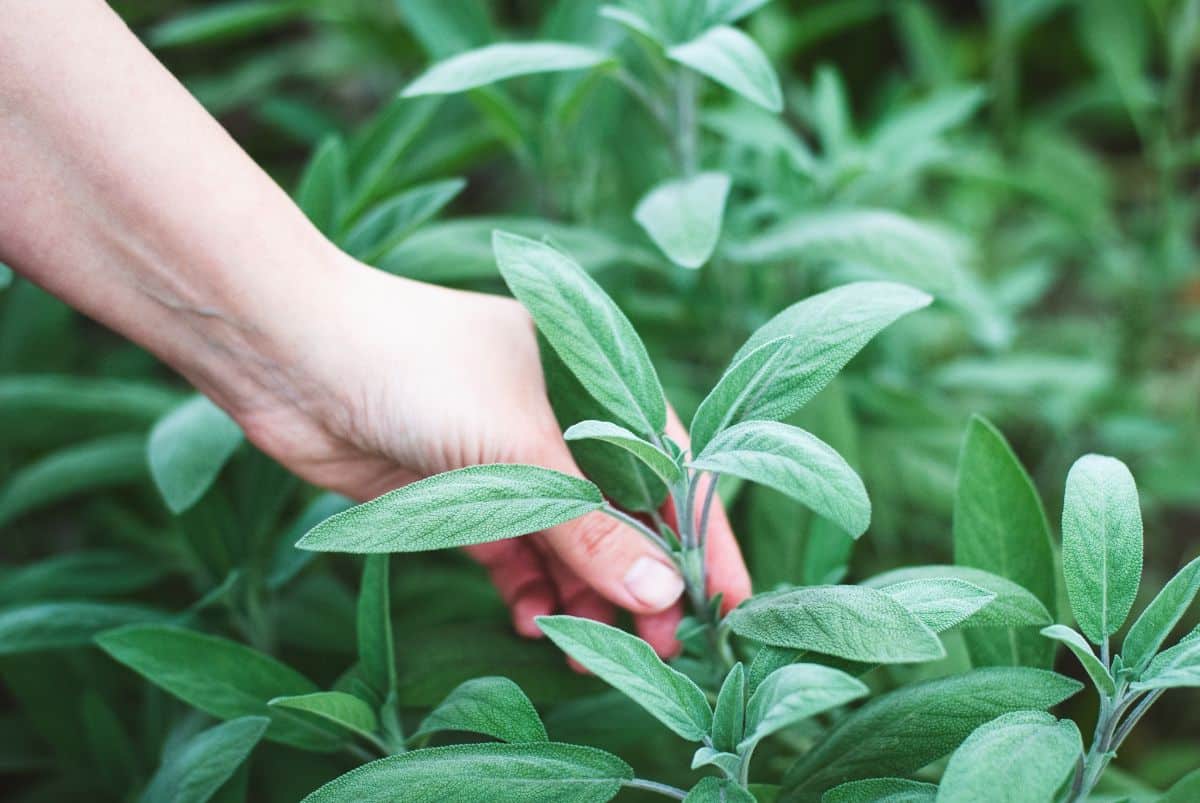
In this post, we are going to teach you how to grow sage, including instructions for planting, fertilizing, pruning, and more.
Skip to the section you need using the advanced jump below. You will also want to take a look at our Russian Sage Full Growing Guide for details on how to grow that specific type of sage.
Jump to:
- What Are Sage Plants?
- Sage Basics
- Where Do Sage Plants Grow?
- Why Grow Sage Plants?
- Sage Landscaping Ideas
- Recommended Sage Varieties
- When Do Sage Plants Bloom?
- How Long Do Sage Plants Bloom?
- When to Plant Sage Plants
- Ideal Growing Conditions for Sage Plants
- How to Plant Sage Plants
- How to Propagate Sage Plants
- How to Care for Sage Plants
- Recommended Planting Combinations for Sage
- Frequently Asked Questions About Growing Sage Plants
- Where to Buy Sage Plants
What Are Sage Plants?
“Sage” is the common name for any plant in the genus with the name Salvia. Sometimes we also just call sage plants “salvia plants.” Salvia belongs to the mint family, Lamiaceae, which we also call the sage family. There are more than 1,000 species within the Salvia genus.
When we are talking about sage in culinary terms, we are referring, in most cases, to Salvia officinalis, also known as “common sage.”
But there are many other species of sage that you may also want to consider planting in your perennial garden for their ornamental value. A number of cultivars have received the Award of Garden Merit from the Royal Horticultural Society.
As a point of interest, the herb rosemary is also classified as a type of sage, with the botanical name Salvia rosmarinus. This was not always the case; prior to 2017, rosemary was classified as Rosmarinus officinalis.
Incidentally, rosemary flowers are also quite pretty and can be an attractive option for your garden.
Sage Basics
| Zones: | 4-10 (depending on the type of sage) |
| Blooming season: | Spring-fall |
| Expected height: | Up to 5 feet (depending on the type of sage) |
| Soil: | Well-drained soil |
| Sun: | Full sun |
Where Do Sage Plants Grow?
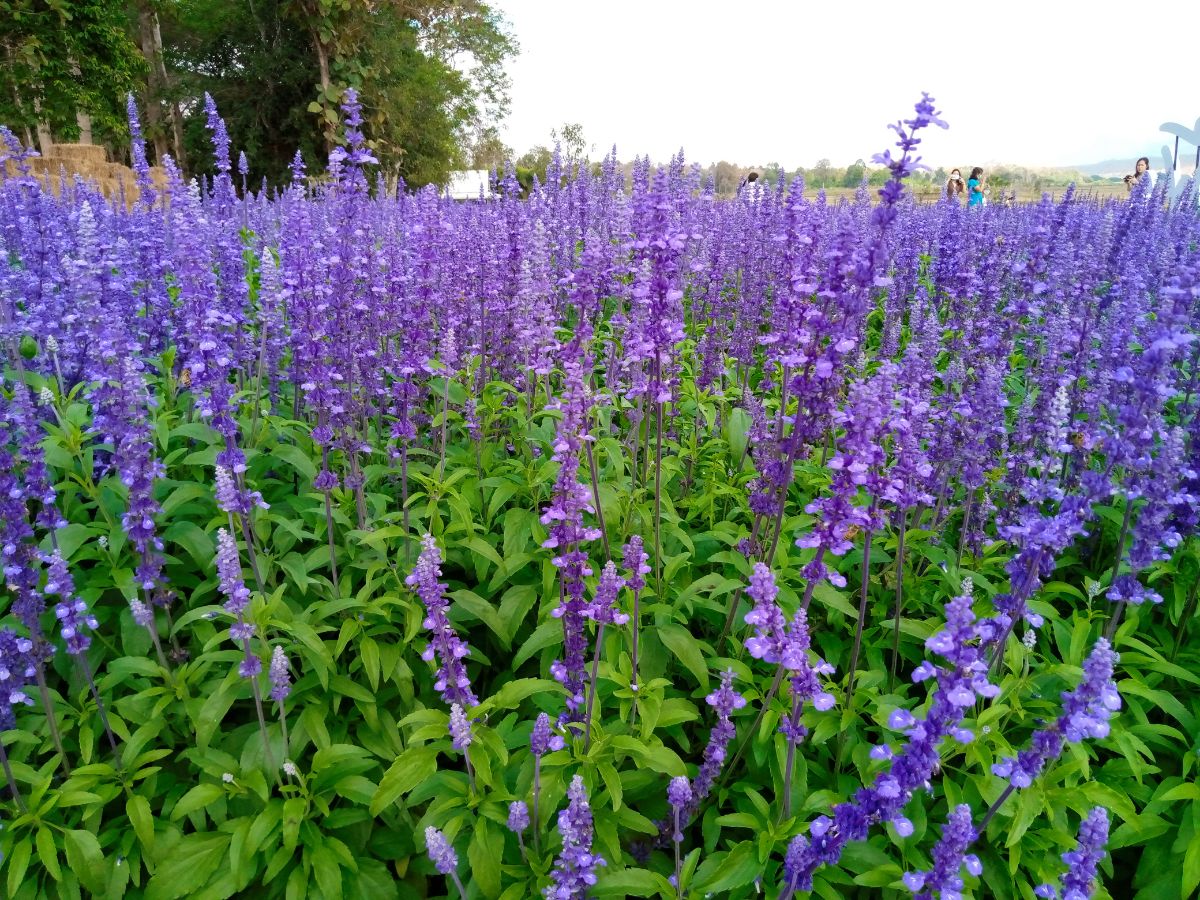
Sage plants grow throughout the world. Around 600 species of Salvia can be found growing in South and Central America, around 250 species can be found in the Mediterranean, and around 90 species can be found in East Asia.
Why Grow Sage Plants?
Here are a few reasons sage plants will swiftly become some of your favorite garden perennials:
• You can make wreaths out of sage and then incorporate dried flowers for a beautiful result that will last a long time.
• Sage plants are renowned for being more or less pest-free in most situations. So, you can spend more time enjoying their blooms and less time trying to ward off unwanted garden guests.
• Sage is resistant to deer and rabbits. Speaking of unwanted garden guests, this plant is unlikely to be the target of these hungry mammals.
• In general, sage is super easy to grow. You should not balk at it even if you are a newbie gardener. You will be surprised how quickly you can catch on and just how little maintenance this plant needs from you to be happy.
• Perennial sages grow quickly. You will be impressed with just how rapidly they can bring a new look to your garden.
• Sage is a drought-tolerant favorite. It can flourish even in relatively dry conditions.
• Pollinators love sage. You will be thrilled to learn that pollinators such as hummingbirds, butterflies, and bees love sage just as much as you love them. You will never tire of seeing them flit about your garden, enjoying the feast.
• Some sage is edible. Although not every type of sage is edible, some types do produce peppery flowers that are suitable for culinary use. If you are growing the right type of sage for this purpose, consider harvesting some of the flowers to use in your salads or teas. As for the leaves, once they are dried, you can put them in potpourri.
• Sage can thrive in many types of soil. That even includes the rocky and poor soils that some of your other perennials might not be able to grow in successfully.
• Among the benefits of sage is how many landscaping ideas there are for this plant. You can find a few ideas below.
Sage Landscaping Ideas
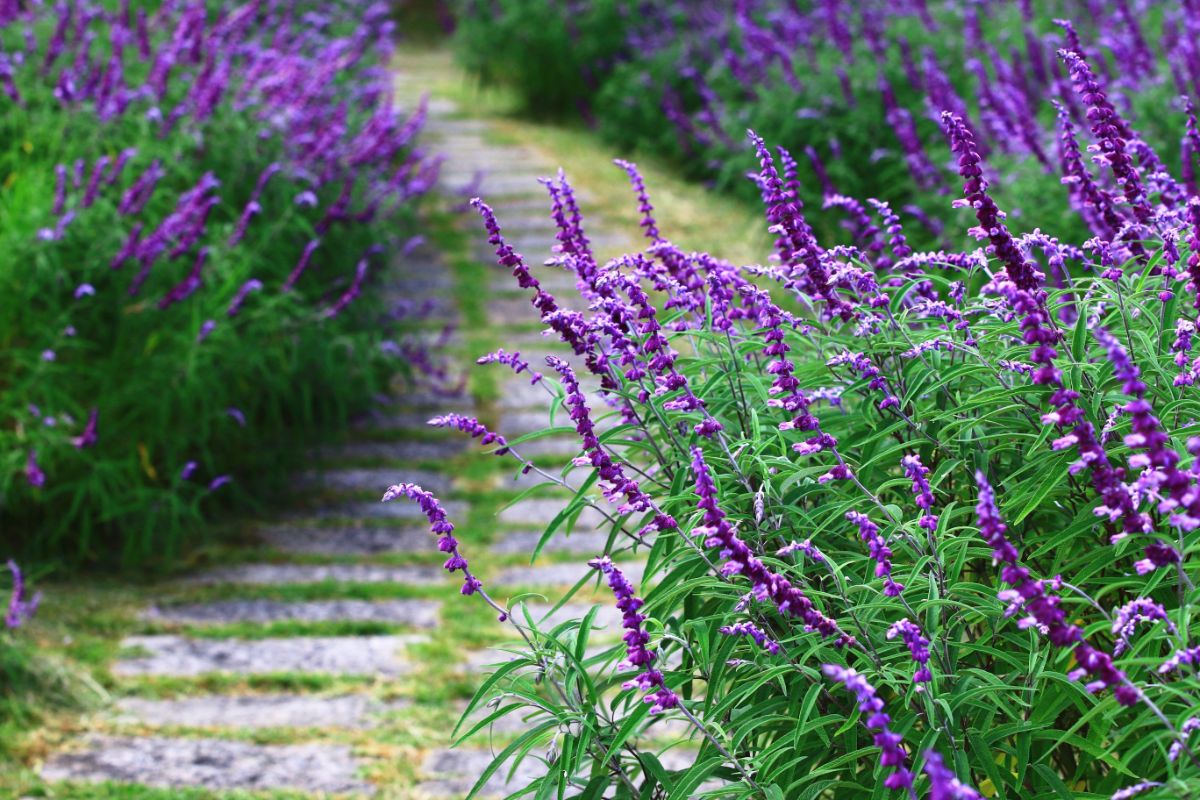
• Line a path: Sage to either side of a garden path can look lovely, especially interspersed with clumps of other flowers.
• Line a fence: Just as sage can work well to line a pathway, it also can be beautifully planted up against a fence. It is tall enough to disguise an unsightly fence as well.
• Rock gardens: Sage can tolerate gravel or rocky soil, so it is a favorite for rock gardens.
• Cottage gardens: You can capture the cottage garden look and feel well with the help of sage.
However you decide to use sage in your garden, you will find that it is one of the most versatile plants for blending with others. For this reason, it is a frequently-recommended companion plant for other ornamental perennials.
Sage can work well for creating a carefully cultivated look or for giving your garden a wilder appearance.
Recommended Sage Varieties
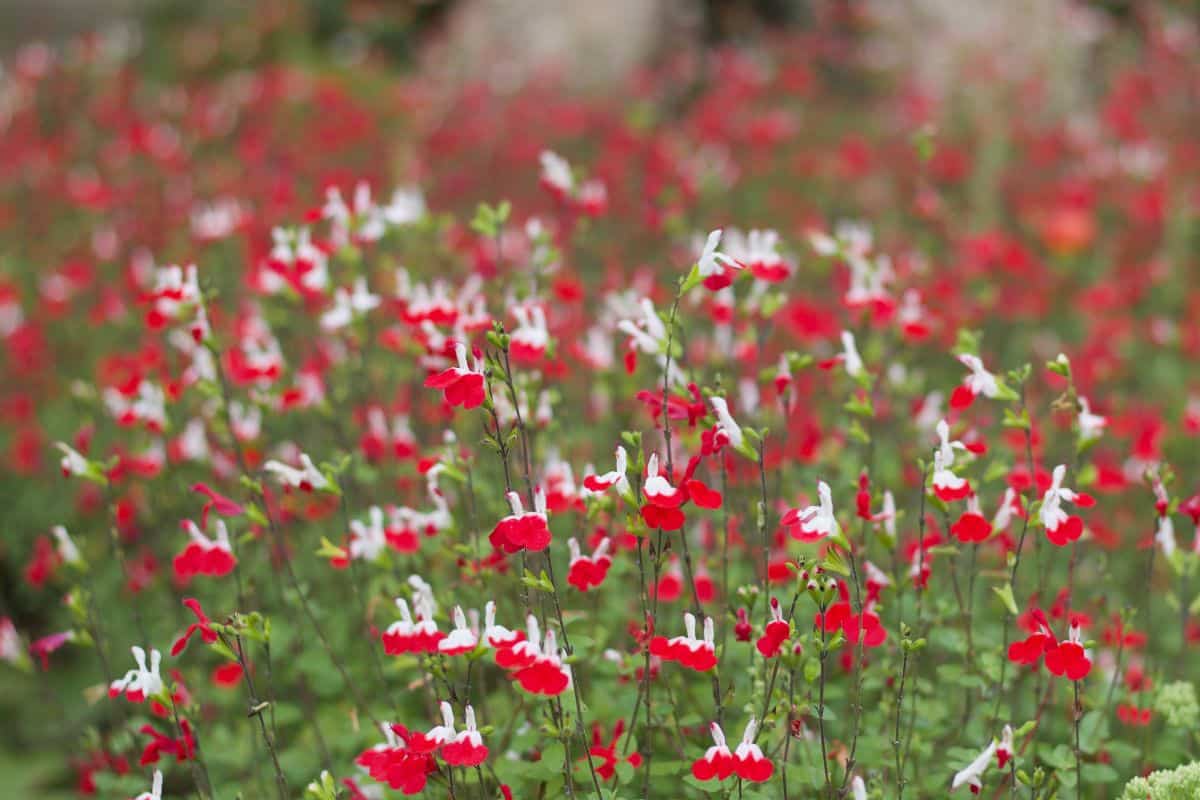
Here are some popular types of sage you can try growing in your garden:
• Salvia officinalis: As we discussed already, this is the type of sage that most people are thinking of when they mention it. If you want to grow sage in part for culinary use, this is one of the best choices you can make. In the next section, you can view some recommended cultivars of this species of sage.
• Salvia elegans: This type of sage is known as “pineapple sage” and is popular as an ornamental plant. It produces red flowers that hummingbirds and butterflies love, so plant it if you want to draw pollinators to your perennial garden. You will find that some types of pineapple sage not only boast lovely blooms, but also beautiful variegated leaves. Consider planting cultivars like Pineapple, Honey Melon, Tangerine, Golden Delicious, Frieda Dixon, or Elk Sonoran Red.
• Salvia fruticosa: This type of sage is referred to as “Greek sage.” Despite the fact that most people are thinking of Salvia officinalis when talking about “culinary sage,” it is actually Greek sage you often find for sale at the grocery store. So, along with planting some Salvia officinalis, you might want to grow some Greek sage as well.
• Salvia melissordora: When people talk about “grape sage” or “grape-scented sage,” they are referring to this species. If you smell the pale purple flowers, you might notice they remind you of grapes, thus the name.
• Salvia sclarea: Another name for this type of sage is “clary sage.” If you are having trouble growing most types of sage because your climate is cool and wet, you might have more luck with clary sage. But it does not do as well with drought conditions, so conversely, it might be harder to grow in climates where most sage species flourish.
• Salvia splendens: The common name for this species is “scarlet sage,” which alludes to the vibrant red blooms. As you might guess, it may attract pollinators.
• Salvia dorisiana: Another way to refer to this species of sage is as “fruit sage” or “fruit-scented sage.” The pink flowers are lovely to behold, and you will delight in the scent, which is similar to pineapple or peach.
• Salvia farinacea: Also known as “mealycup sage,” this species can produce purple, white, or blue flowers.
• Salvia gesneriiflora: The “grapefruit sage” produces beautiful bright red flowers on contrasting black stems for a look that really pops.
• Salvia microphylla: This sage goes by a number of other names, including blackcurrant sage, Graham’s sage, or mirto de montes (“myrtle of the mountains”). As you would expect, the “blackcurrant” name references the flavor of the plant, which is popular for teas and desserts.
• Salvia lanceolata: If you want to grow a type of sage in your garden that can go well in your seafood recipes, consider this species, which hails from South Africa.
• Salvia apiana: This type of sage is known more commonly as “white sage.” White sage plants can add a hint of piney flavor to your cuisine.
• Salvia haenkei: If you want your sage to bring more privacy to your garden, you can plant this species. With a maximum height of around 8 feet, it will delight you with its red flowers. Sometimes it is called “prawn sage.”
• Salvia greggii: The common name for this ornamental sage plant is “autumn sage.” The blooms can be red, orange, purple, or pink, and it is an excellent drought-resistant option. While you are standing close to it, you will notice it produces a fragrance similar to mint.
• Saslvia sonomensis: In chaparral areas, you will sometimes come across “Sonoma sage.” It is a compact cultivar, topping out at around 1 foot, and produces blue and purple blooms.
• Salvia guaranitica: Two other names for this type of sage include “anise-scented sage” and “hummingbird sage.” If you live in a warm area, you can grow it as a perennial. The flowers are a stunning deep purplish-bluish color.
• Salvia van houtteii: For wine-hued blooms, consider planting this gorgeous species of sage.
• Salvia leucantha: Abundant purple blossoms make this one of the most spectacular ornamental species of sage with a compact growth habit.
• Salvia clevelandii: Referred to sometimes as “Jim sage” or “Cleveland sage,” this species is popular both for its light purple blooms and its attractive foliage.
• Salvia chamaedryoides: Here is a plant that works especially well in rock or gravel gardens. With its blue blossoms, it is known as “Mexican blue sage,” “blue oak sage,” and “germander sage.”
Popular Cultivars of Salvia officinalis
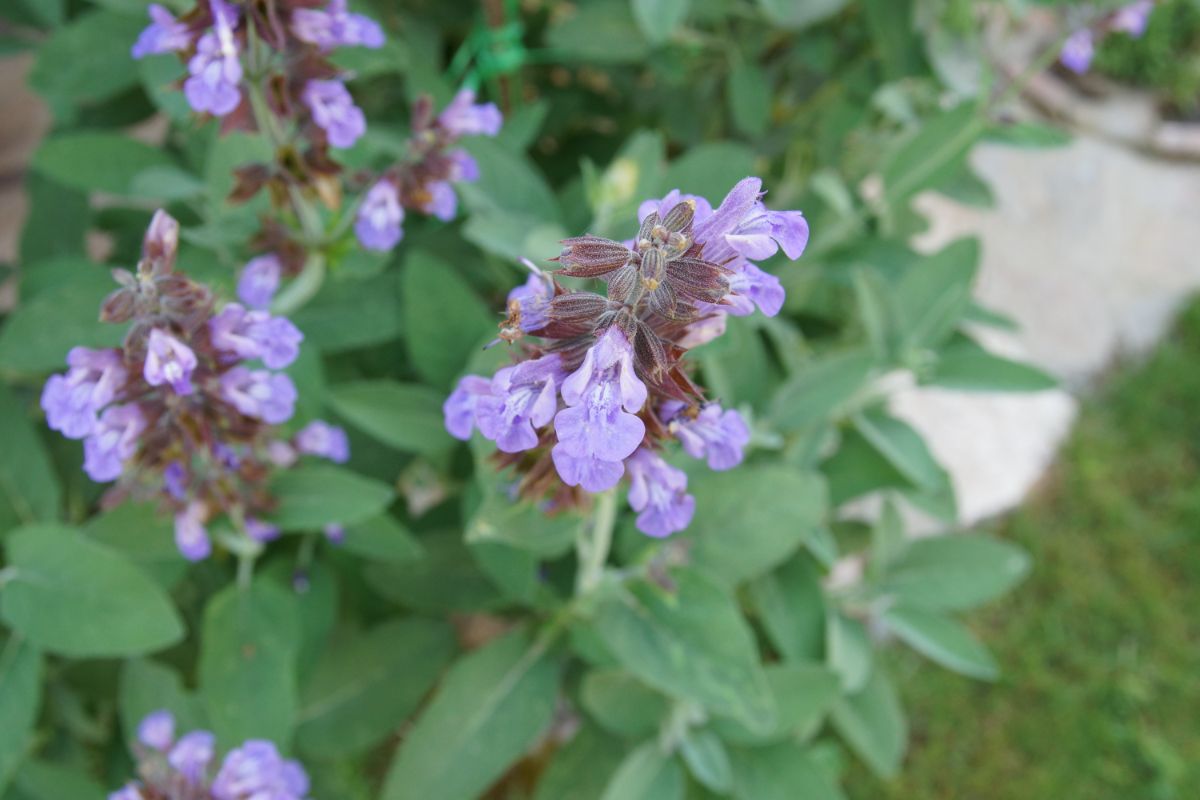
Within each species of sage, there are quite a few cultivars you can grow, each with its own distinctive features. To give you some examples, here are some popular cultivars of Salvia officinalis.
• Golden Sage: This type of sage is named for the color of its leaves. They are not actually yellow; they are green in the middle with yellowish-greenish edges.
• Dwarf Green: As the name indicates, this is a compact cultivar of Salvia officinalis. Another name for it is “Minimus.”
• Rosea: For a type of Salvia officinalis that produces pink blossoms, you can consider this cultivar. Another name for it is simply “Pink Flower” sage.
• Purpurea: Here is a really unusual-looking sage plant that has leaves that are a combination of pale silvery green and lavender. Another name for the cultivar is “Purpurescens.” It is sometimes called “Purple Sage” as well.
• Holt’s Mammoth: This cultivar has especially large leaves.
• Window Box: Just as the name suggests, this cultivar is ideal for growing in containers thanks to its compact growth habit.
• Tricolor: This sage features green leaves with light borders and hints of a purplish-pinkish color.
• White-Edged. The leaves of this cultivar are green with white rims.
Along with the cultivars above, you will find numerous other options when you are browsing sage plants for sale online.
When Do Sage Plants Bloom?
Sage blooms in spring, summer, and fall, with the most profuse bloom period typically in summer.
How Long Do Sage Plants Bloom?
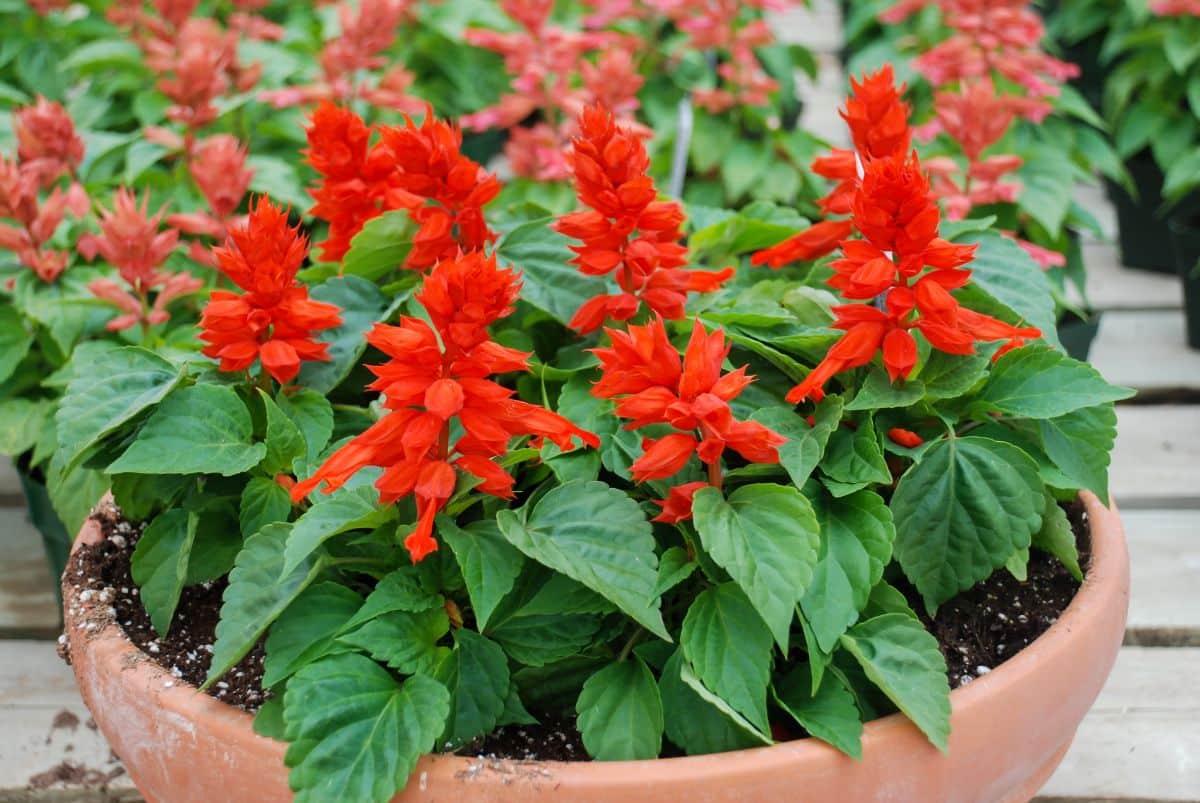
Sage plants produce repeat flushes of blooms, providing you with months of beauty.
When to Plant Sage Plants
Spring is the ideal time for planting sage, but you can also plant it in fall.
Ideal Growing Conditions for Sage Plants
Sage plants flourish best if they receive the ideal amount of water and are planted in the right sun and soil conditions. Let’s go over their requirements.
How Much Sun Do Sage Plants Need?
Sage is a plant that needs proper sunlight exposure to grow well. In fact, full, direct sunlight is best whenever possible. That said, you can grow sage in partial shade if you have to.
What Type of Soil is Right for Sage Plants?
Well-draining soils are essential for sage plants, and they prefer sandy or loamy soils over other types.
They can thrive in poor, rocky, and gravel soils. But they do not like wet soil, and they rarely tolerate clay, although sometimes you can get away with it if you are planting them on a hillside rather than a flat part of your garden. You should amend clay if that is what you are stuck with so that it drains more effectively.
The pH for sage should be around 6-7.
How Much Water Do Sage Plants Need?
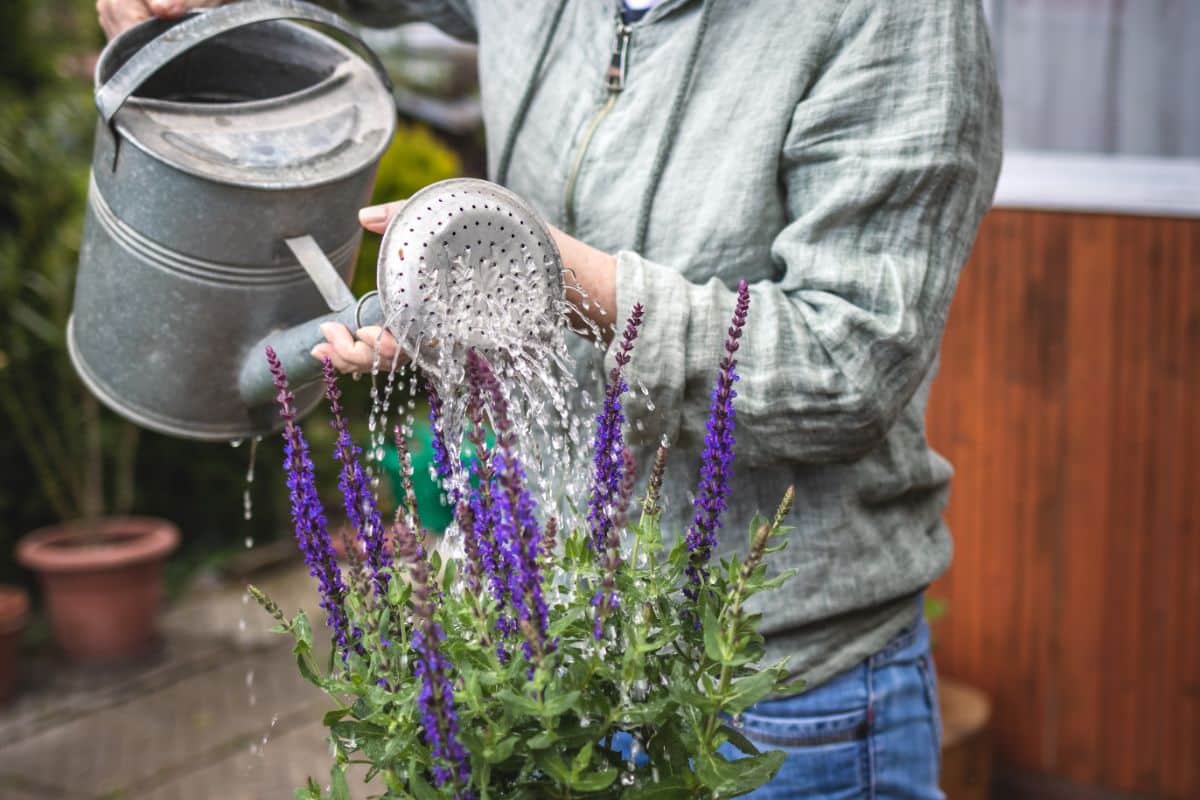
Like many other plants in your garden, sage needs about an inch of water per week. Make sure that when you water sage, you do not overdo it. If your sage plants are wilting, ask yourself whether you have been overwatering them. It is a common mistake.
How to Plant Sage Plants
Now you know the ideal light conditions, water requirements, and soil types for sage plants. Below, we go over the step-by-step instructions for planting sage in your flower beds or in your container garden.
Ground Planting
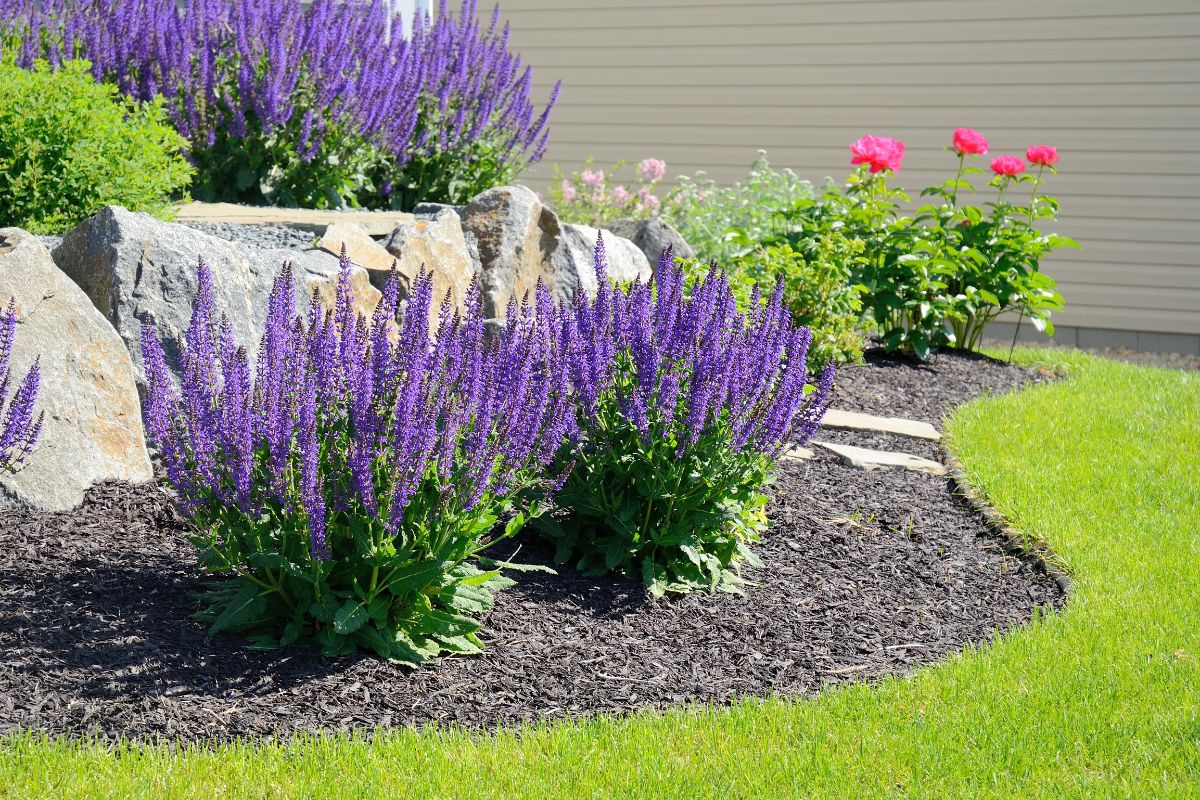
1. Start by choosing a spot in your garden for your sage and prepping the soil. While sage can grow in clay soil, you will need to amend it first to improve drainage. Compost and sand are both suitable options.
2. Make holes for your sage plants. They should be 18-24 inches apart from one another. It is essential to space plants for sufficient air circulation to prevent problems with rot.
3. Backfill the soil and water well.
Keep giving your sage plants extra water while they are establishing. Sage plants may also benefit from extra water throughout the first season after you plant them.
Container Planting
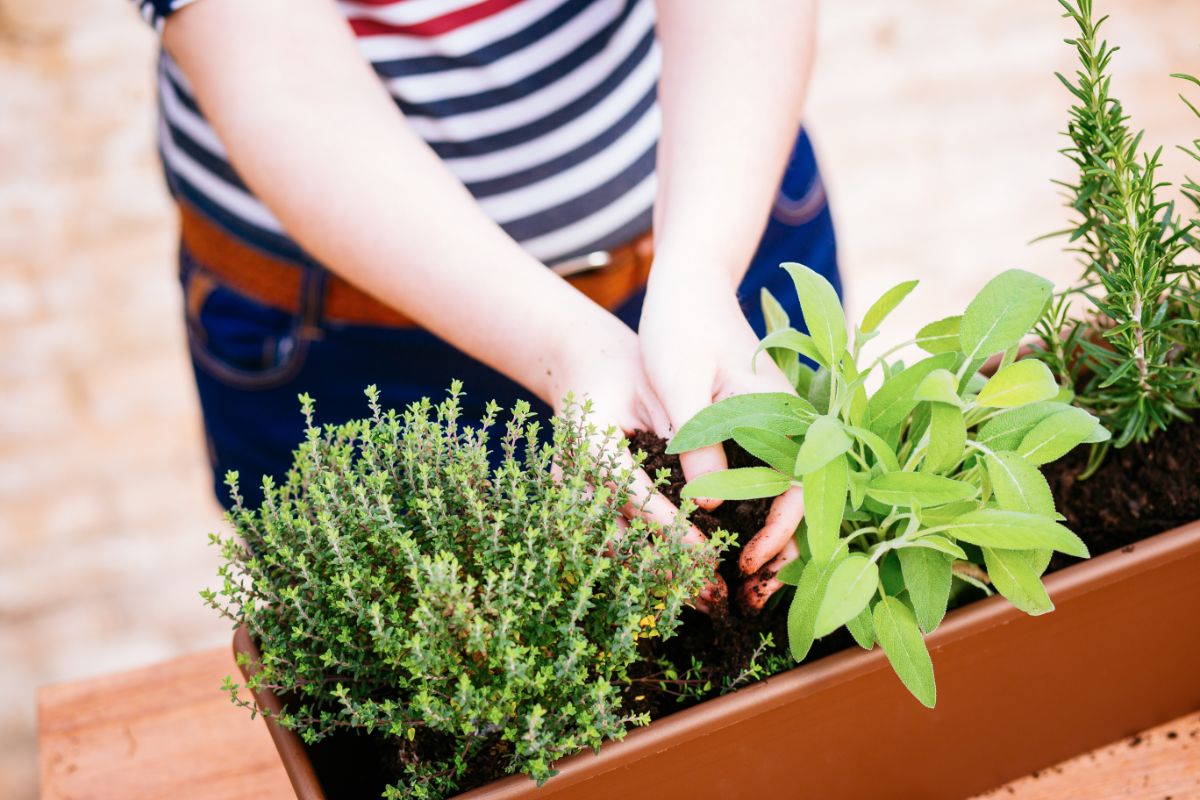
1. Select a large container for this perennial plant. Add drainage holes if they are not already present.
2. It is sometimes suggested that you line the bottom of your container with mesh before adding your potting mix. This will help to keep the drainage holes clear.
3. Add the potting mix. We have seen both all-purpose potting mix and lightweight potting mix recommended for growing sage. We suggest you look up the specific recommended potting mix for your type of sage.
When going with an all-purpose potting mix, you might want to enhance it with some sand or perlite and perhaps some fertilizer.
4. Plant the sage in the container and continue filling in the soil around it.
5. Water well.
How to Propagate Sage Plants
There are several options for propagating sage plants: starting them from seeds, growing them from cuttings, or dividing them. Seeds and cuttings are preferable.
Starting Sage Plants from Seed
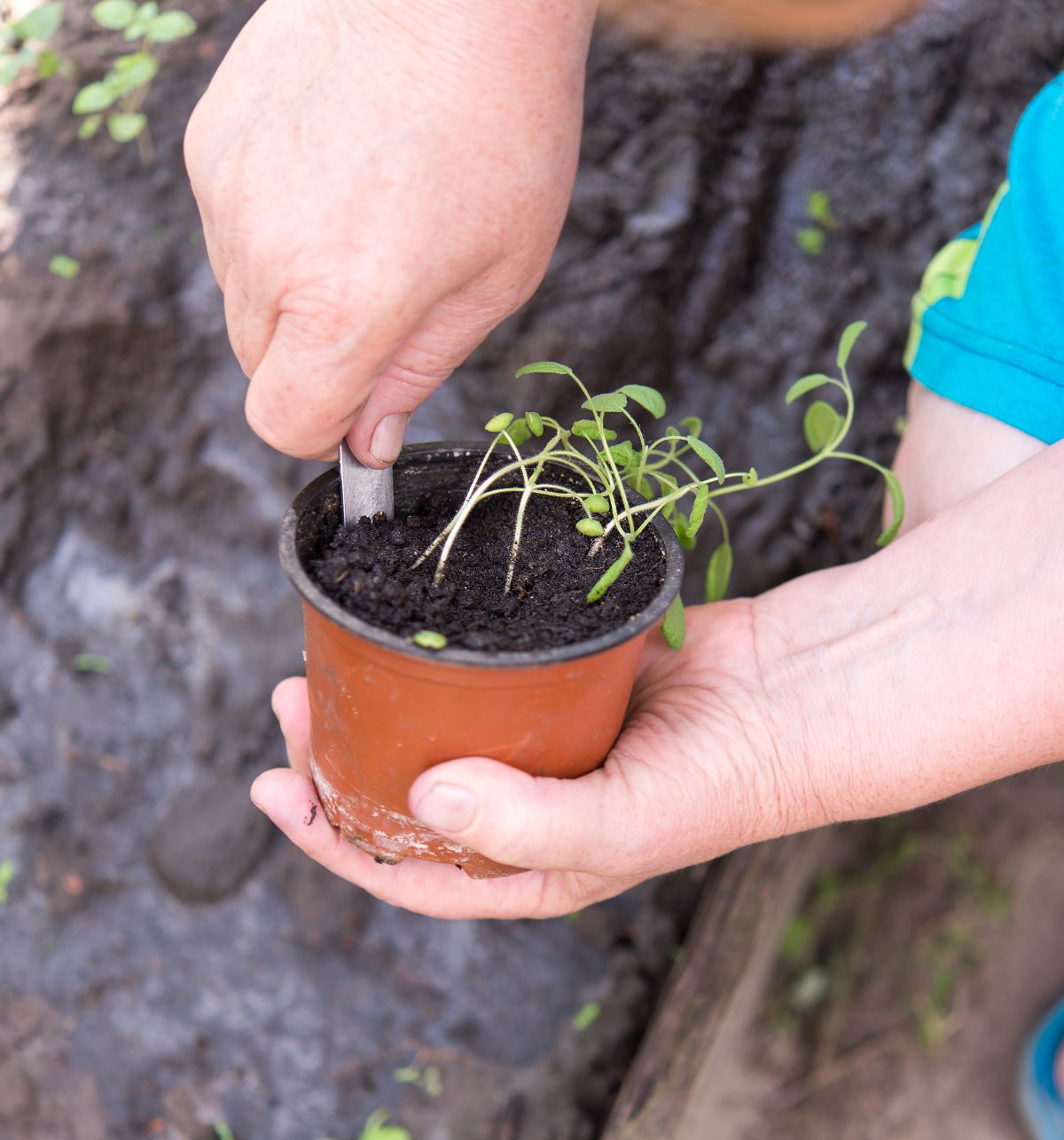
For those who are patient, it can be rewarding to start sage plants from seed.
You can take either of two approaches:
• Start the seeds indoors 6-8 weeks before you expect the last frost of the year
Or …
• Wait until the last frost is over and sow the seeds outdoors.
While sowing outdoors is less involved, gardeners sometimes find they have more luck if they start the seeds indoors, where they can more carefully control conditions. Below are the steps for starting sage seeds indoors.
1. If you want your seeds to germinate as quickly as possible, you should start out by storing them in the refrigerator for a month or so in a plastic bag.
2. After the seeds have had their cool period, prepare a seed tray by filling it with seed starter mix.
3. Mist the starter mix with a spray bottle. Wait for the excess water to drain.
4. Sow the seeds on the surface, and then cover them thinly with about eight of an inch of soil. Make sure the light can still reach them.
5. Cover the seeds with plastic wrap, so the moisture is locked in.
6. Put the seeds where they will receive filtered light and be kept at a temperature of around 60-70 degrees Fahrenheit. If it is appropriate, you can apply heat from the bottom.
7. Periodically, check whether the soil is still moist. Mist it when needed.
8. Within 1-4 months or so, the seeds should germinate. Remove the cover once that happens. Keep misting the soil as the seedlings continue to grow.
9. Transition the seedlings to larger pots.
10. Keep taking care of the seedlings indoors until the last frost is behind you. Then, harden the seedlings in preparation for transplanting outdoors.
Starting Sage Plants from Cuttings
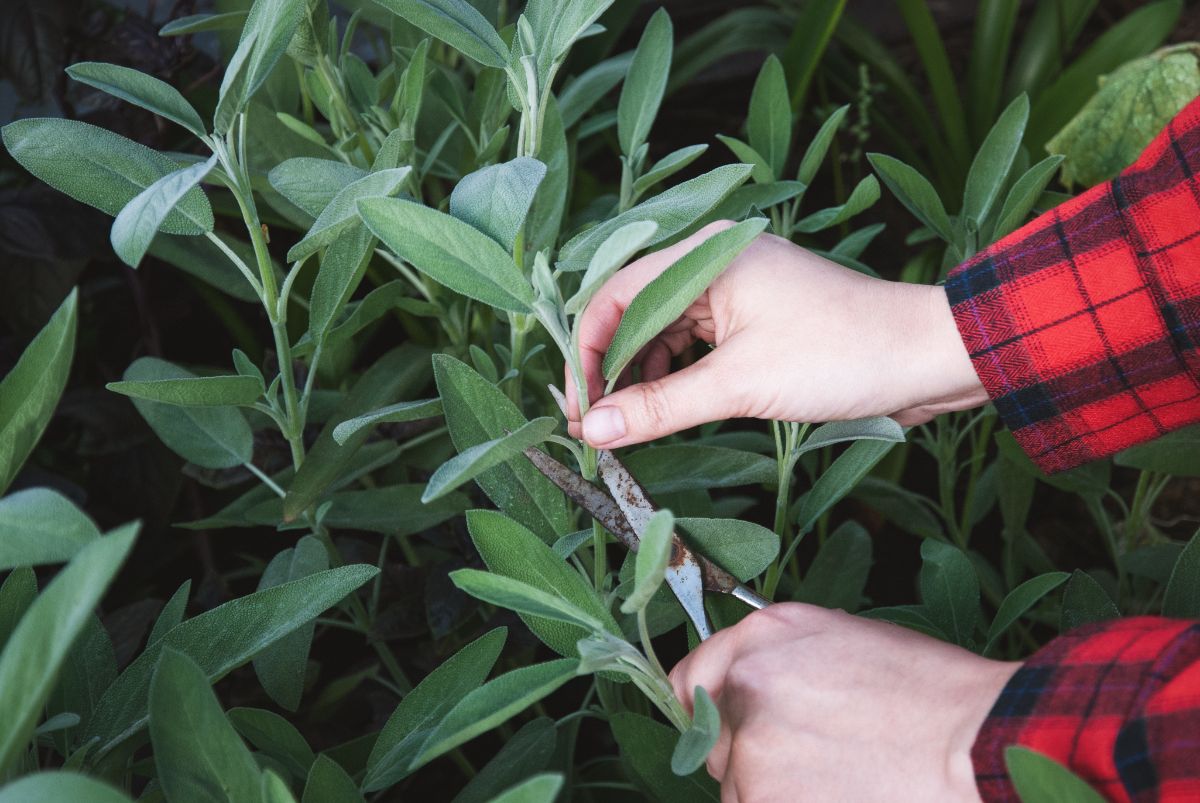
If you want to propagate your sage with cuttings, follow these steps.
1. Take your cuttings in mid-to-late-summer. Cut around 4-6 inches, and avoid sprigs that are flowering.
2. Now, remove the leaves from the bottom parts of the sprigs, leaving the top leaves intact.
3. Dip the cut ends of the springs in rooting hormone.
4. Fill a container with potting mix, and insert the sprigs.
5. Moisten the soil with a spray bottle. Keep an eye on the sprigs, and continue to moisten the soil when needed. Wait for about 6-8 weeks while the sprigs sprout roots. You may wish to keep your cuttings covered during this process with clear plastic. But do not let the covering touch the plants.
6. Once the new plants are well enough rooted, they are ready to transplant. Harden them before you place them permanently outdoors.
How to Divide Sage Plants
We have seen some sources say to divide sage every 3-5 years, and others say to avoid it when possible. Sage plants can sometimes be finicky about this. If you do have to divide a sage plant, here are the directions.
1. Use a shovel to dig in a circle around your sage plant.
2. Dig underneath the sage plant and pry it carefully out of the ground.
3. Get rid of the woody sections, and divide the remaining sections of the plant.
4. Make holes for your newly-divided sage plants, plant them, and backfill the soil.
5. Water well.
How to Care for Sage Plants
What do sage plants need from you in terms of fertilizing, mulching, staking, and pruning? Let’s go over basic care instructions for Salvia.
How to Fertilize Sage Plants
Spring is the best time for fertilizing sage. Fertilize these plants no more than once a year, and do not give them too much, or they might be more susceptible to fungal disease.
How to Mulch Sage Plants
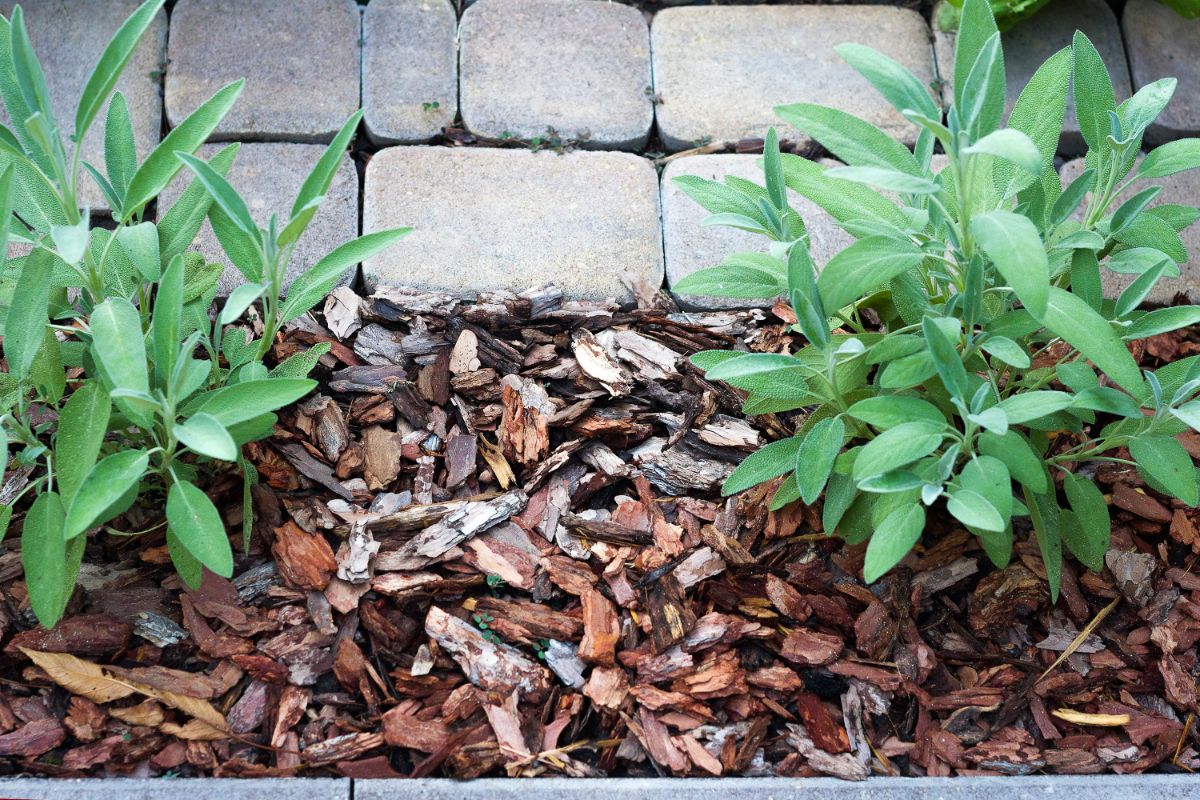
To mulch, or not to mulch? With sage, that is a very important question.
Mulch can be dicey for sage plants because they are so easily prone to developing rot, particularly during winter.
At the same time, you do not want your sage plants to suffer from weeds. Plus, mulch can provide valuable insulation for the soil when temperatures drop.
The solution is to use gravel or pebbles as mulch. These materials provide the benefits you are looking for without moisture-related drawbacks.
How to Stake Sage Plants
Sage plants do sometimes require staking, particularly when they are young and their stems are not very sturdy yet.
If you do not want to stake them, an alternate option is just to plant other plants next to them to offer the support they need.
Keep in mind, however, that if you try this second approach, you need to be sure that there is sufficient airflow to prevent problems with rot.
How to Prune Sage Plants
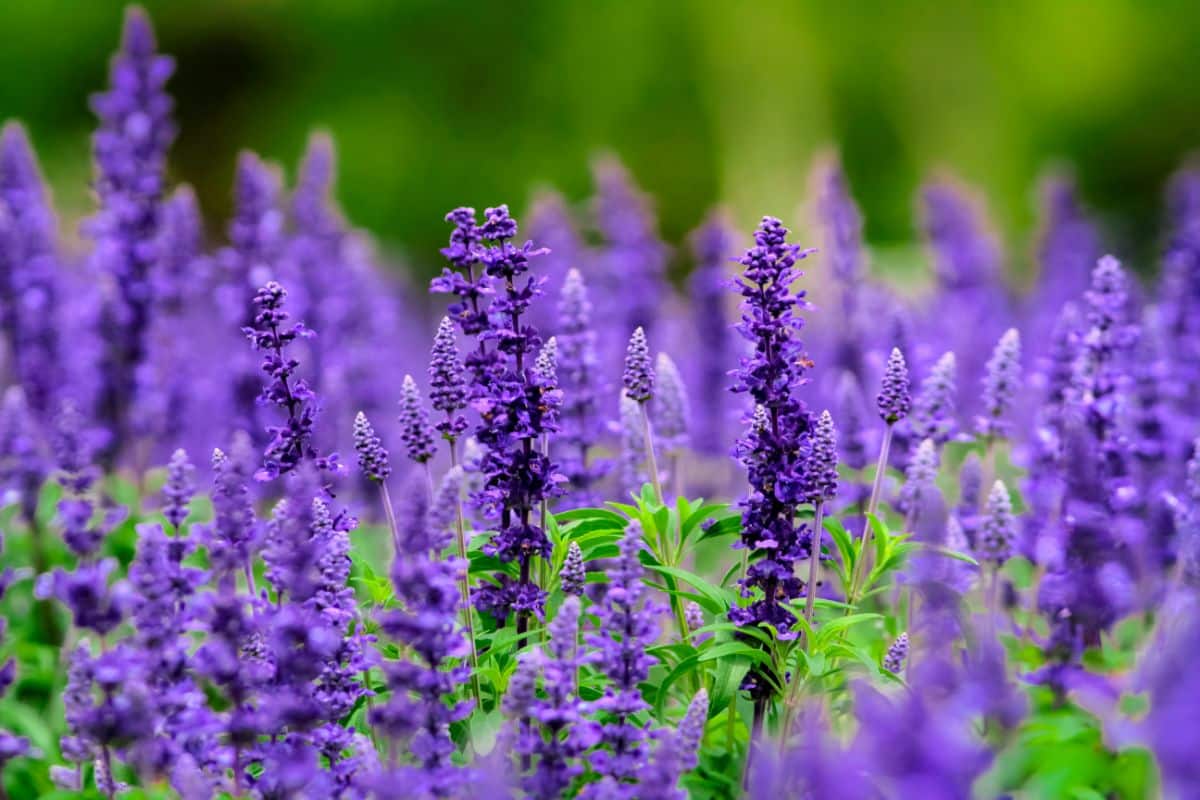
With sage plants, you have the decision to make with respect to flowering. You can either prune the sage to prevent flowering or allow the plants to produce blooms.
Your decision should come down to how you plan to use the sage. If you want the plant largely for cooking purposes, you might want to prevent flowering. But if you want it for ornamental purposes, obviously, you will desire the blooms.
Purdue University explains, “If left to flower, sage will produce blue blooms that attract butterflies, but this leaves less oil content translating to reduced flavor in the leaves. Sage plants should be able to provide a dependable supply of fresh cut leaves for three to five years, after which the plants should be replaced or divided to rejuvenate.”
How to Deadhead Sage Plants
If you do allow your sage plants to produce blooms, you can consider deadheading them. Cutting back your sage will prompt the plant to produce new growth. From that new growth, the plant will produce new blooms.
You can consider leaving the flowers alone if you want them to go to seed. The birds might appreciate it.
When to Cut Back Sage Plants
Sage plants are most likely to survive the winter if you do not cut them back too late in the season. So, you should avoid overharvesting too close to winter and wait to cut back your plants until early spring. The exception in spring would be if you look at your plants and see they are already sending out new shoots. If that is the case, just skip cutting back the sage.
How to Harvest Sage
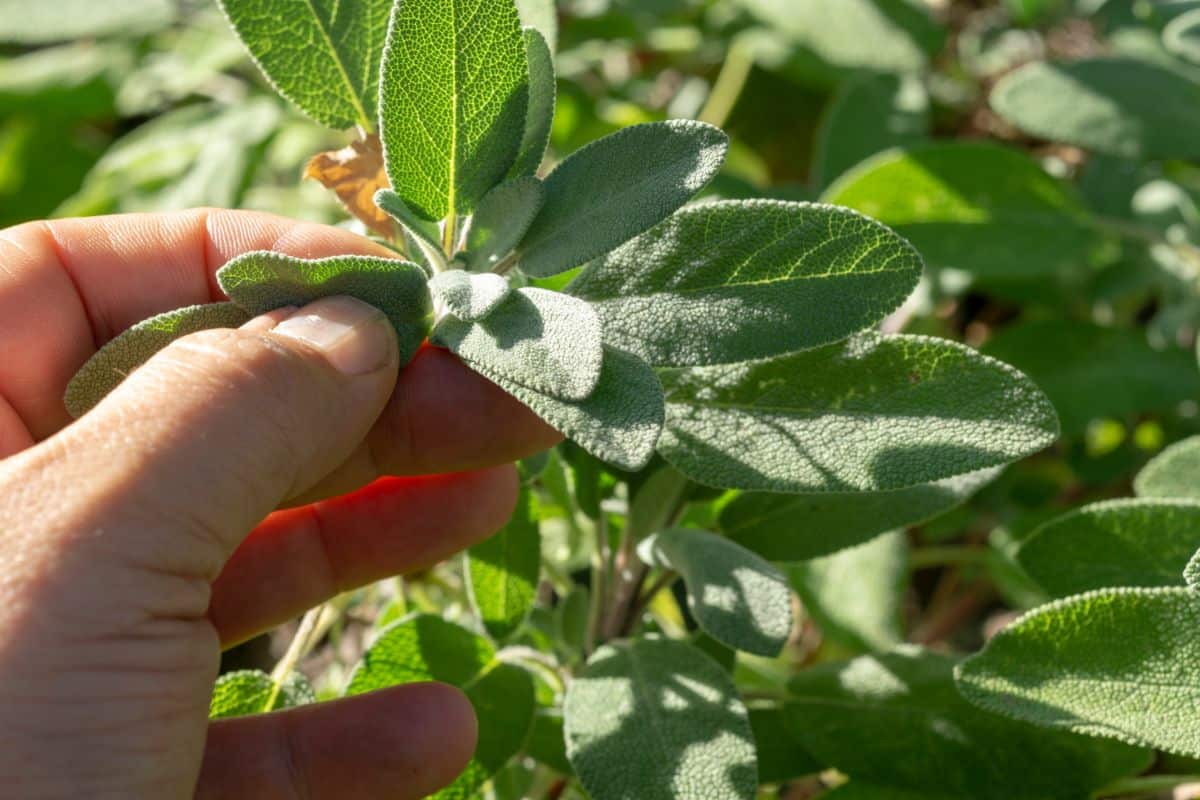
If you are growing a type of sage that you can harvest for culinary purposes, you can do so at any point during the growing season.
It is best not to harvest much in the first year after planting, as your sage will still be establishing itself.
But after that, you can harvest more liberally. It is even okay to cut whole stems at a time.
Once you harvest the sage, hang it upside-down to air-dry. Then, get rid of the stems, and put the leaves in a sealed plastic bag or bin.
Are Sage Plants Vulnerable to Diseases or Pests?
Some diseases that sage plants can get include crown gall, mint rust, root rot, stem rot, and wilt.
Problems with rot are most common when sage is growing in soil that does not drain well enough.
Pests are rarely a problem for sage, but Salvia may sometimes be targeted by spittlebugs, spider mites, whiteflies, leafhoppers, slugs, and snails.
Do mammals eat sage plants? Not usually. Sage is deer-resistant and rabbit-resistant.
Recommended Planting Combinations for Sage
Here are a few examples of plants that can go well with Salvia in your garden:
• If you have a vegetable garden, consider planting sage around the perimeter. It may help to drive away pests that would otherwise feed on your veggies (especially your cabbages).
• Creeping phlox: This can be a good choice for a sage companion if you are growing your Salvia in a rock garden.
• Rosemary: Technically, this is a type of sage, but it is so often listed as a companion plant for sage that we will list it here anyway.
• Nasturtiums: Gardeners sometimes recommend planting nasturtiums next to sage in order to keep whiteflies at bay. They are also pretty next to each other!
Frequently Asked Questions About Growing Sage Plants
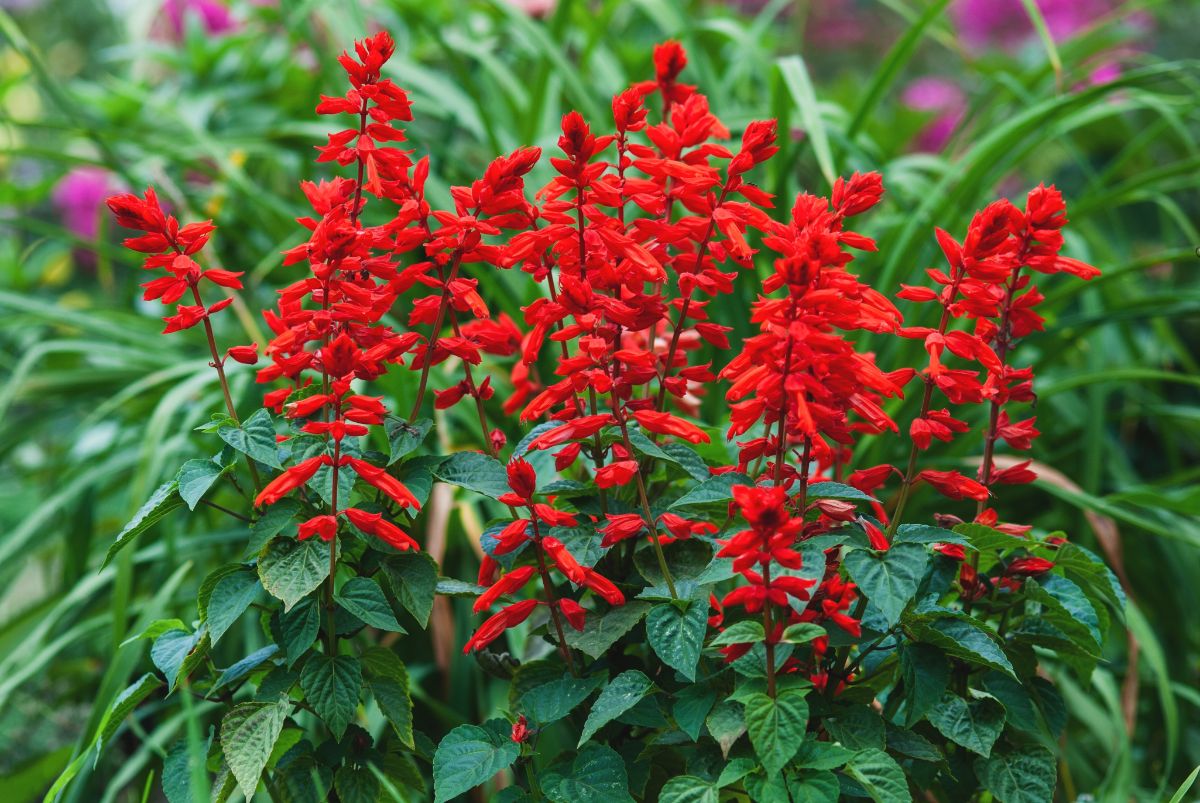
To finish up our guide to growing sage plants, let’s answer some frequently asked questions.
Sage is a popular food source for a lot of creatures. One seed store explains, “Large mammals such as deer, antelope, elk, mountain sheep, and rabbits will eat the young foliage, and the small white to pale lavender flowers attract hummingbirds, butterflies, bees, and other insects. Small mammals such as squirrels and rabbits, and birds such as sparrows, grouse, and quail will eat mature seeds.”
Generally speaking no, sage plants are not classified as toxic to dogs or cats. That being said, we do suggest keeping your pets away from the species Salvia divinorum. See the question and answer below on “Is Salvia a drug?” for more details. It seems possible that this species could get your pet high, and since we don’t have a lot of information about the effects on animals, this is best avoided.
That depends on what type of sage we are talking about. You can eat common sage (Salvia officinalis). Indeed, it is one of the most popular herbs for cooking, referenced famously in “Scarborough Fair,” along with parsley, rosemary, and thyme.
The taste of common sage can be described as “peppery.” You can add it to pasta, soups, meat dishes, vegetable dishes, mushrooms, and other recipes. It is particularly popular during the holiday season.
But there are other types of sage that are not edible. Be sure to look up the type of sage you have and whether it is suitable for culinary use before you start adding it to your recipes.
You are thinking of the species Salvia divinorum. It produces psychoactive effects—and those effects would not necessarily be described as “fun” or “pleasant” by some users. Salvia can be very dissociative, and some users report that it can mess with one’s perception of time (i.e. by replacing time with a sense of the eternal). The effects of the trip may also sometimes not fully subside after it is over. Some people report that their consciousness felt forever changed after a single trip.
So, whatever you do, do not try eating this particular type of salvia without being crystal clear about what you are getting into. Even with a small dose, you can have an intense trip, and you can never “undo” that trip or its results.
Sage is a hardy perennial, but in some climate zones, you might have to grow it as an annual.
Where to Buy Sage Plants
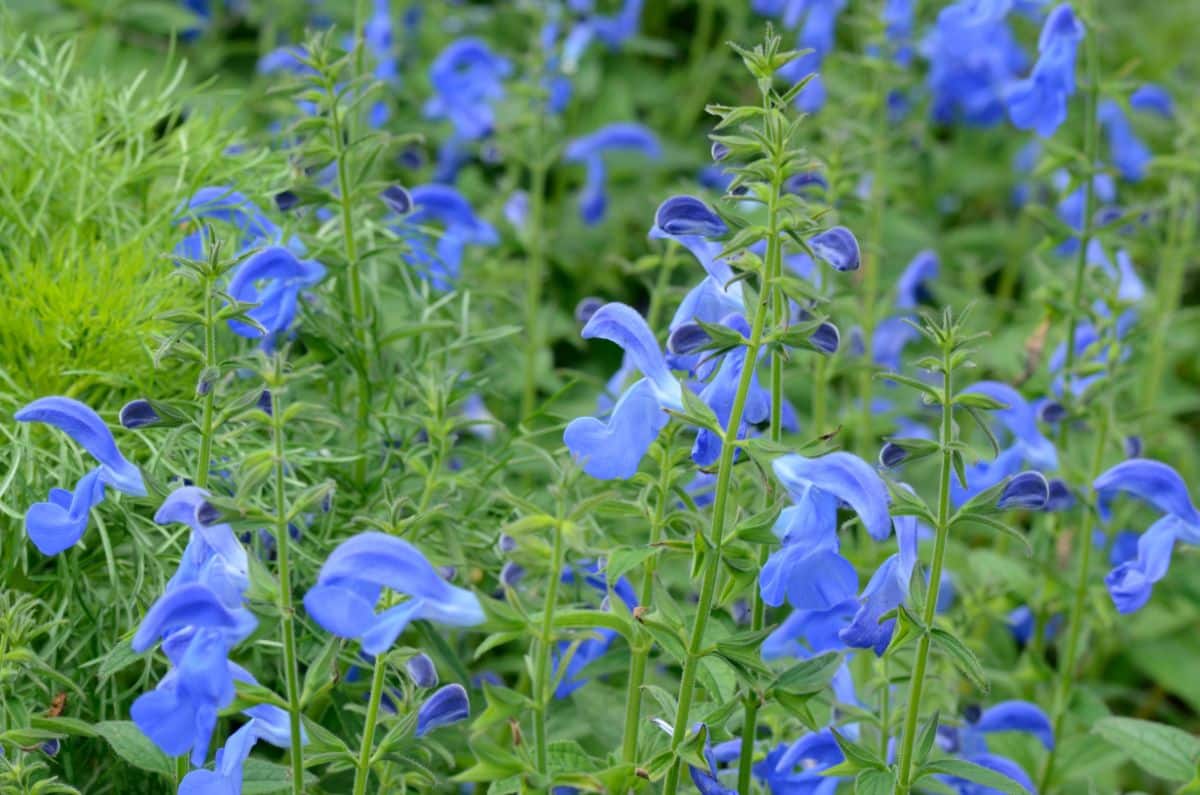
Salvia is a plant that has a lot going for it. It produces gorgeous flowers, attracts pollinators, and is resistant to deer, heat, and drought. If you are ready to grow these beautiful and easy plants in your garden, shop sage plants online now.

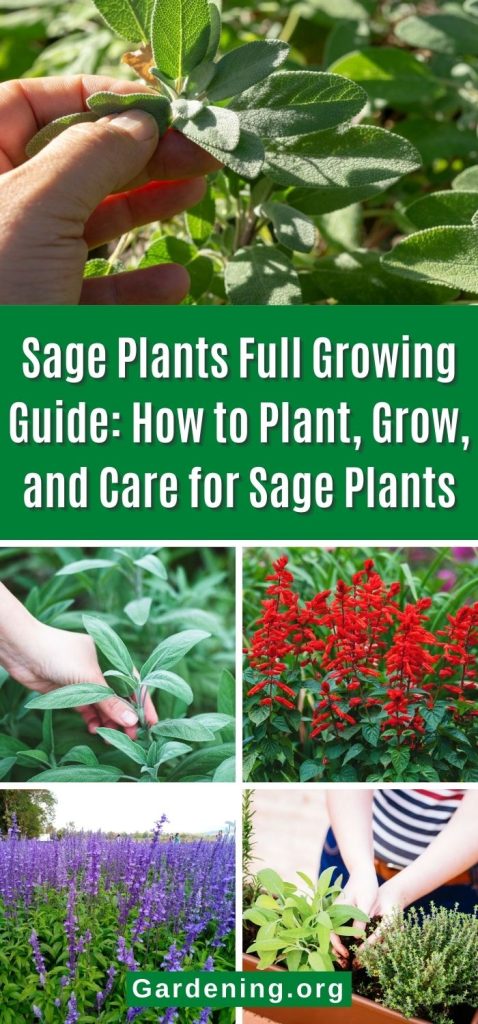
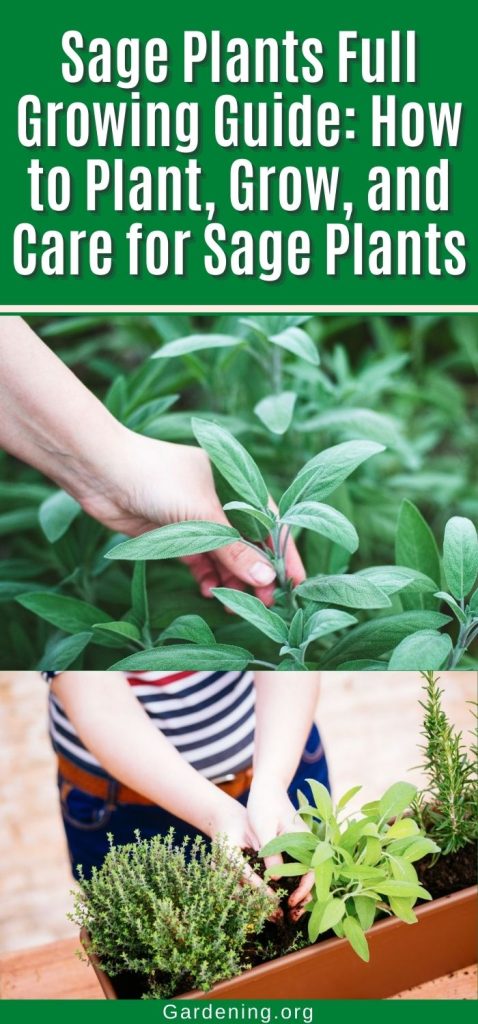
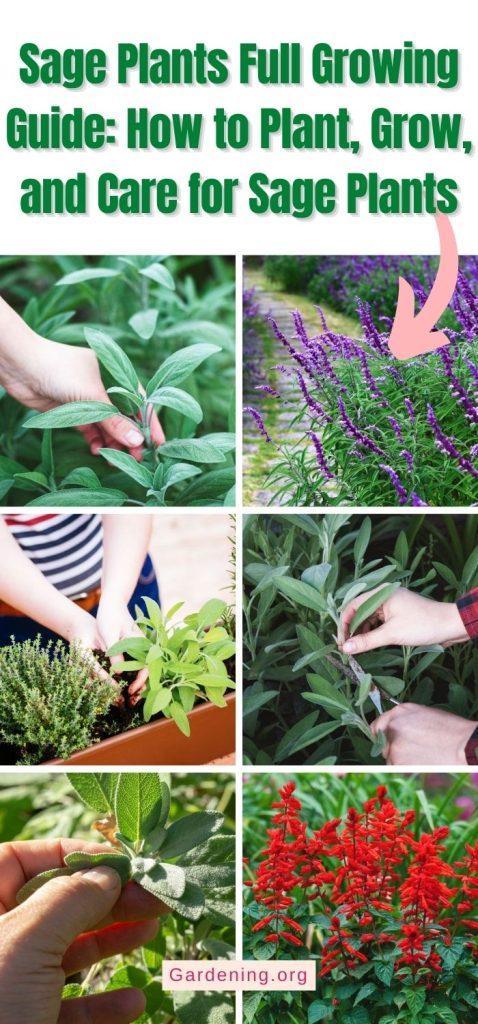
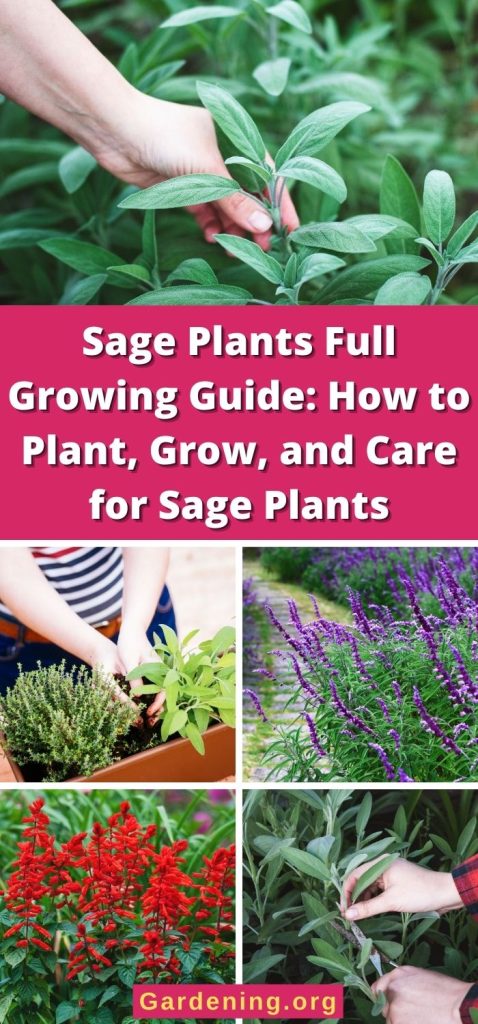

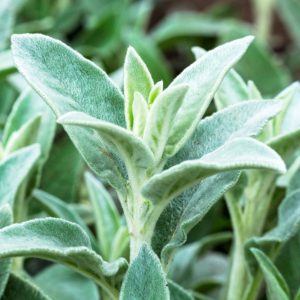
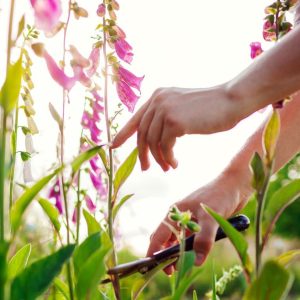
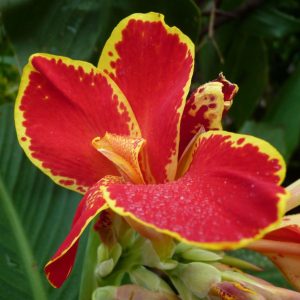
Leave a Reply